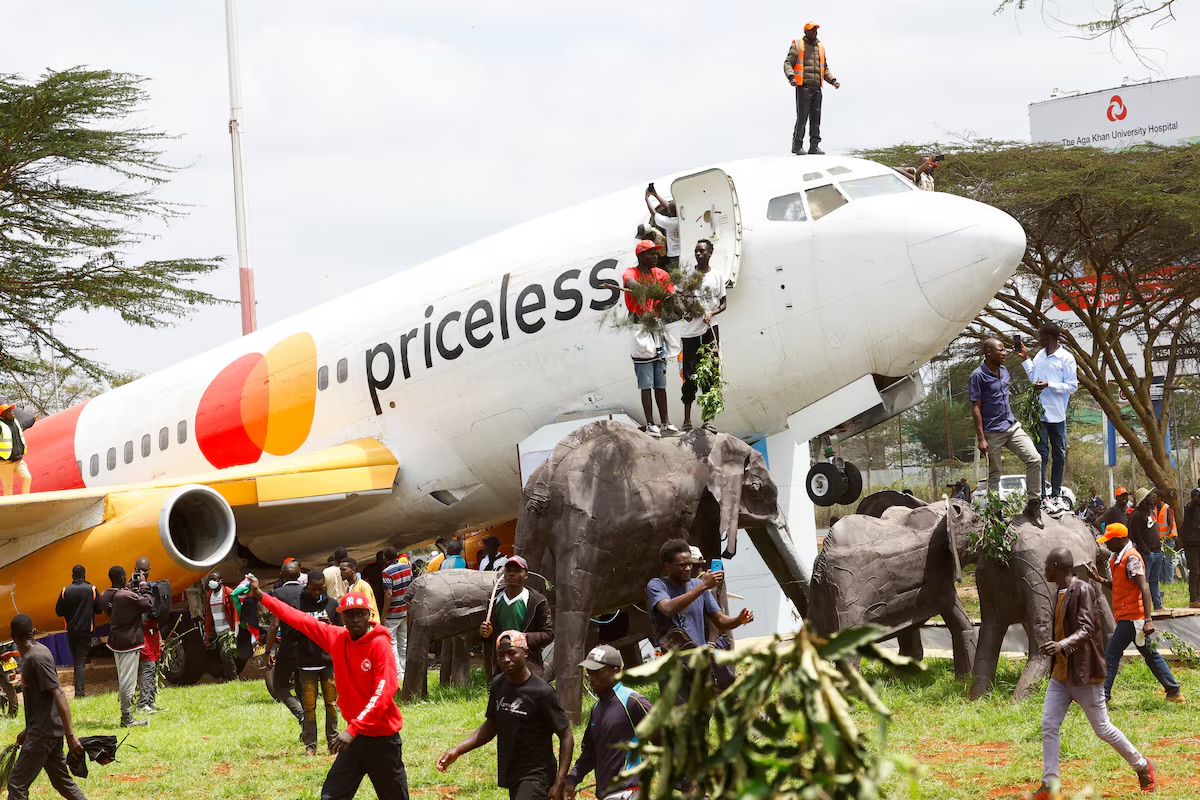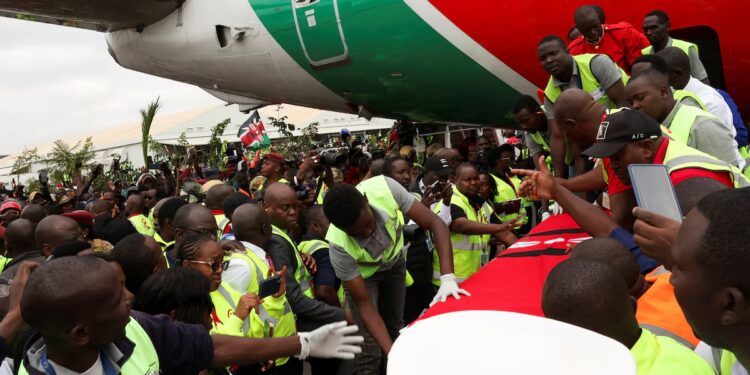Four people were killed in Kenya’s capital Nairobi on Thursday after security forces fired live rounds and tear gas to disperse huge crowds that had gathered at a stadium where the body of opposition leader Raila Odinga lay in state, local media reported.
Odinga, who died on Wednesday aged 80 in India where he had been receiving medical treatment, was one of Kenya’s most influential political figures, a man whose career spanned decades of struggle, imprisonment, and near misses at the presidency. Thousands of supporters had filled the streets from early morning, turning what was meant to be a solemn national moment into a scene of chaos and grief.
Witnesses said the unrest began when mourners forced their way through a gate at Nairobi’s main stadium, overwhelming security forces. Soldiers fired shots in the air as the crowd surged forward, and police later fired tear gas to clear the grounds. A police source confirmed that at least two people were shot dead at the stadium, while broadcasters KTN News and Citizen TV later reported that the death toll had risen to four, with dozens more injured.
The violence left the stadium empty and eerily quiet. Only hours earlier, it had been filled with chants, songs, and cries of mourning for a man who had come to embody Kenya’s long, unfinished conversation about democracy and justice.
Earlier in the day, thousands of mourners had stormed Nairobi’s international airport, interrupting a ceremony where President William Ruto and other officials were receiving Odinga’s body with full military honours. The unexpected breach forced authorities to suspend airport operations for nearly two hours. Crowds also spilled onto nearby roads and attempted to approach parliament, where the public viewing had originally been planned before it was moved to the stadium.

Image: Thomas Mukoya
Raila Odinga’s death marks the end of an era in Kenyan politics. Known both as a fierce opposition leader and a pragmatic dealmaker, he was imprisoned in the 1980s for his pro-democracy activism, served as prime minister in the coalition government formed after the disputed 2007 election, and ran unsuccessfully for president five times. His alliances shifted with time, most recently, he struck a political pact with President Ruto, his former rival, but his appeal among ordinary Kenyans remained rooted in his image as a champion of reform.
For many, especially among his Luo community in western Kenya, Odinga symbolised resistance to political exclusion and corruption. His supporters often accused the establishment of robbing him of electoral victory through fraud, and his defeats left lasting scars in a nation still healing from its cycles of division and unrest.
At the stadium, emotions ran high. Mourners waved flags, sang liberation songs, and carried portraits of Odinga as they pressed against security barriers. “He fought tirelessly for multi-party democracy, and we are enjoying those freedoms today because of his struggle,” said Felix Ambani Uneck, a university student who had walked miles to pay his respects. “We owe him our voice, our right to speak.”
The tragedy that unfolded underscored the deep connection, and tension, between Odinga’s legacy and the country he helped shape. What was meant to be a day of collective mourning became a reminder of the volatility that still simmers beneath Kenya’s political surface.
As dusk fell over Nairobi, the smoke from tear gas hung in the air, and streets once filled with chanting were silent. Raila Odinga’s body will continue to lie in state in the coming days, but the government faces the challenge of balancing grief with order as the country prepares to bid farewell to one of its most consequential sons.
For millions, Odinga’s story remains unfinished, a struggle for justice and dignity that transcends one man’s life, now left for a new generation to carry forward.



